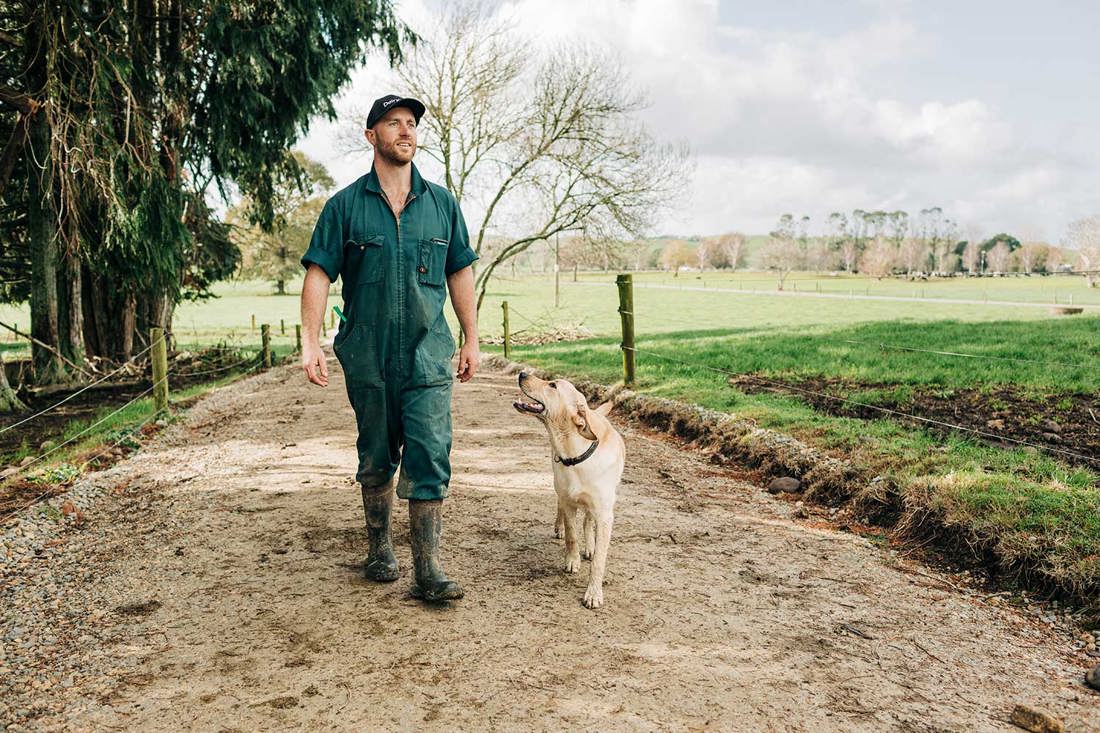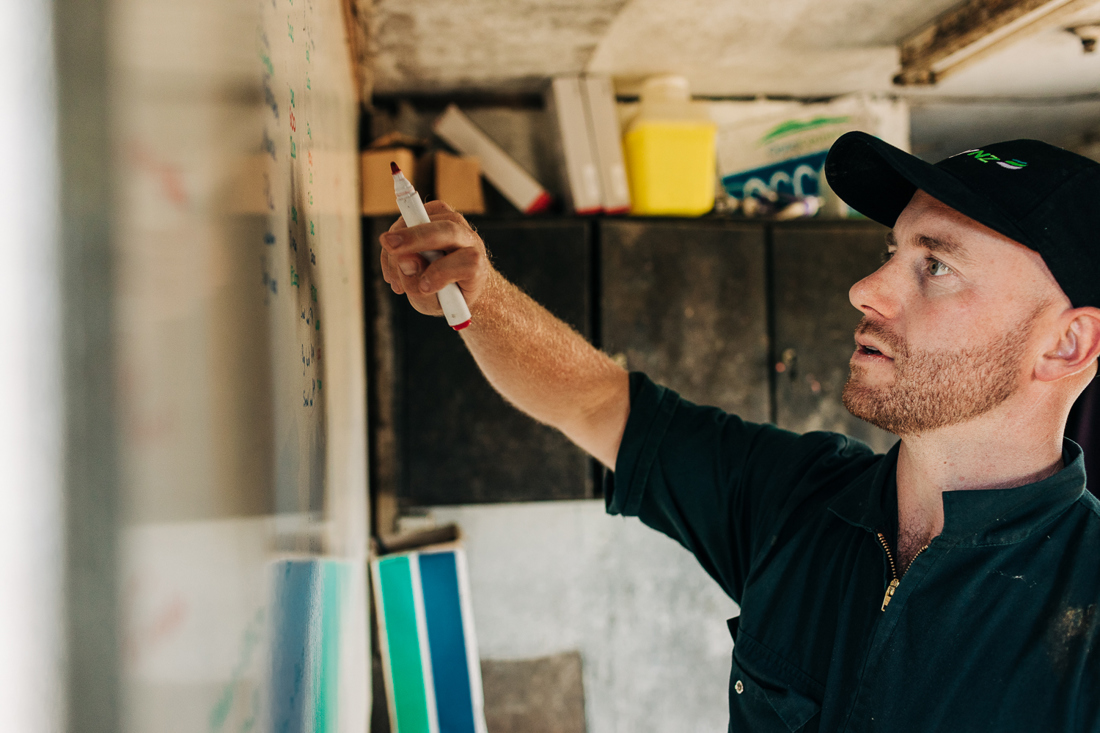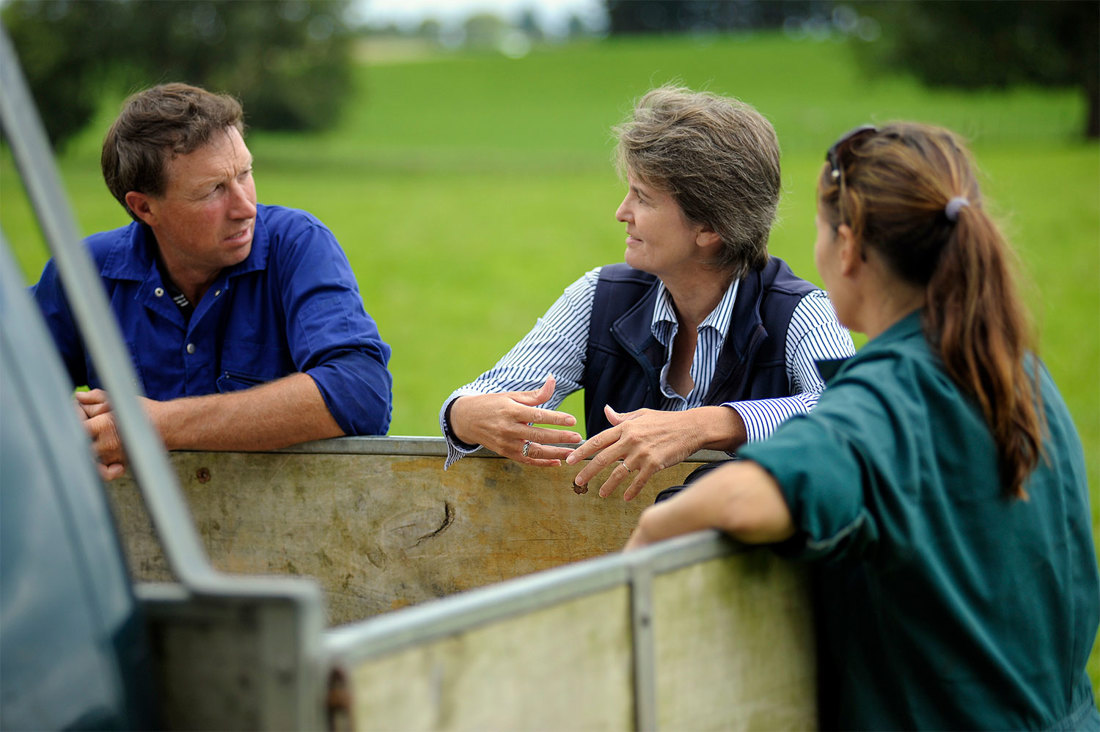When you have a productive workplace, you can achieve more with the same input or achieve the same results with less input (hours). Productive work time is about getting things done on the farm efficiently to meet the needs of the business and the people; ensuring sustainability and job satisfaction, faster is not always the best outcome. Team productivity needs to be optimised to avoid burnout, poor workplace culture, and low staff retention.
Benefits of a productive workplace
- Your business has enough people with the right skills to ensure workloads are achievable, and animal welfare, food safety, environmental and employment practices are not compromised.
- On-farm injuries are minimised which is essential to avoid lost time and productivity. Research has shown that on average, farmers with injuries took 12 days off work, but took 26 days to feel fully recovered.
- Productivity is high because people are motivated to work efficiently and enjoy their work, which leads to greater retention of people in your team.
- There is enough flexibility in the system to support a desirable and productive work-life balance for everyone on the team.
- Technology investments support people working efficiently.
New Zealand’s Workplace Productivity Commission identifies seven practices that help drive workplace productivity, they start with building leadership and management capability.
Seven practices that help drive workplace productivity
Building leadership and management
Investing in skills and people
Organising work and workplaces
Creating productive cultures
Networking and collaborating
Innovation and use of technology
Measuring what matters
To measure people productivity in the dairy sector, we talk about cows per full time equivalent (FTE) as it is the most comparable across farms, although milksolids per FTE is also used.
These comparisons can be difficult due to farm size, farm dairy type and feeding system. Measuring your own performance and thinking about how you can improve is a good place to start.
On an international scale New Zealand dairy farming is highly productive because of our pasture-based farm systems, however domestically we know there is considerable variance between farms in the time it takes them over a year to do the job. The figure below, from a 2023 DairyNZ study, shows a two-fold variance in the number of hours it takes different farms to milk 500 cows.

This difference creates opportunity. Being more productive can create time and provide choices for you and your team around what you do with that time. It can also create a more attractive career opportunity. The value of this is significant when attracting and retaining people in your business.
In 2023 DairyNZ asked 1,250 dairy employees about working on dairy farms and they placed reducing total hours worked, unsocial hours, and weekend work all in the top five most important factors for retaining people in dairy farming jobs.

How to get more productive
To get started we recommend giving our Productive workplaces section a read, where you'll find details on how to implement some of these workplace productivity practices into your farming business. It’s tempting to think that technology or work processes are the productivity solutions, but a whole business approach is required to improve productivity.
…. we were looking for the ‘big’ improvements…now, we’ve found out … it’s just lots of small things that need improving to build up to the big-time savings, overall.
The table below outlines some options that you could consider adopting on your farm.

Read more about these by following the links below:
- Rosters - Consider if there is a different way of running your roster with your team and run a trial to see if it works.
- Kanban boards - workflow management tool used on farms to improve communication and task organisation.
- Workplace Efficiency Booster - team activities and tips to help you improve your operational efficiency by identifying and addressing things that cause waste every day.
- Timesheets - Look at different methods of recording hours worked so you can work out how much time you are really spending on the job.
- Milking efficiency - Understanding what efficient milking looks like and if this is happening on your farm. Could you improve milking routines?
- Milking intervals - Could a different milking interval would work on your farm? A step like this can dramatically reduce both unsociable and weekend hours as well as total hours of work for little change in productivity.
- MilkSmart app - Easily assess your milking performance, find out how much time you already spend on milking, and how much you can save.
Who else can help
FarmTune was developed by DairyNZ and delivered by trained consultants People Mad and No8HR to enhance dairy farm management using the principles of LEAN.




